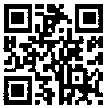You’ve heard us rave about how brilliant Aurasma
is and what an asset it has been to help “upgrade” our school. However, it
hasn’t been all smiles and rainbows. There's been a lot of hard graft and
careful planning going on behind the scenes. Even so, there were things that managed to slip past us or failed to take into consideration. So, with hindsight now on our
side, here’s a run down of things which we would have done differently, plus
some unexpected obstacles we stumbled across while putting our project
together. You can also see a video summary if you feel so inclined.
One
of the biggest issues we came across was image recognition across different devices
and tablets. There were a multitude of factors at play: poor camera quality,
bad lighting, small drawings with faint lines and lack of colour. This lead to Aurasma
having a little difficulty picking up some of our trigger images. Not ideal when
you want to show off in front of eager parents after building up a lot of hype, then for it to not work at all.
We heavily advise using images as large as possible with a combination of thick
lines and bold colours. Don’t worry too much about the finer details, make sure
it stands out.
Also
make sure that you spread out your pictures. For our birthday calendar, some
months are more popular than others in terms of the number of birthdays. You only need to take one look at March to see it’s chock-a-block with
students. This presents another problem for our trusty app; since the
pictures are so close together, it sometimes detects an image other than the
one you are currently focusing on. It’s a pain in the neck when the video you
want to watch is interrupted by Jim’s self introduction instead (just as a
hypothetical example of course).
Another
problem which came apparent towards the final stages was that parents, especially
mums, had a hard time getting close enough to the drawings with device in hand. Some having to resort to climbing on the sofas in order to reach high
enough! This was overlooked during the planning phase as we were primarily more
concerned about fitting the display in the room, and out of reach of curious fingers. Me and Jim being over average
height probably had something to do with it too. Definitely something to bear
in mind when making your own Aurasma display. Defeats the purpose of having
good content if nobody can reach/access it!
Following
on from the idea of accessibility, something we had to overcome on the job was making
our content available to parents and visitors alike. As mentioned in a previous post, you must
be following the creator’s “channel” on Aurasma in order to access their Auras.
We weren’t actually aware of this when we first started, so you can imagine our
bewilderment when Aurama didn’t work for any of our students or parents. The demonstration
process would go smoothly, until the part when we got them to try using their own
devices. At the time I put it down to devices with poor camera quality, but
after many similar incidents, myself and Jim put our head together to fix our dilemma.
With a little help from one of our students, Hikoro, and some trial and error, we
managed to solve the mystery. We made an instructional video on how to “follow” a channel
so nobody would have to suffer what we went through.
So
that concludes our first step into the realms of augmented reality. It feels as
though we have only just dipped our toes into a vast ocean of endless
possibilities. We look forward to using Aurasma more in the future, really immersing
ourselves into the digital age and adding an extra dimension to the language
learning venture.


No comments:
Post a Comment
By all means leave your comments - please do not be offensive, abusive, or rude. We ask you to sign your comment as well, please.